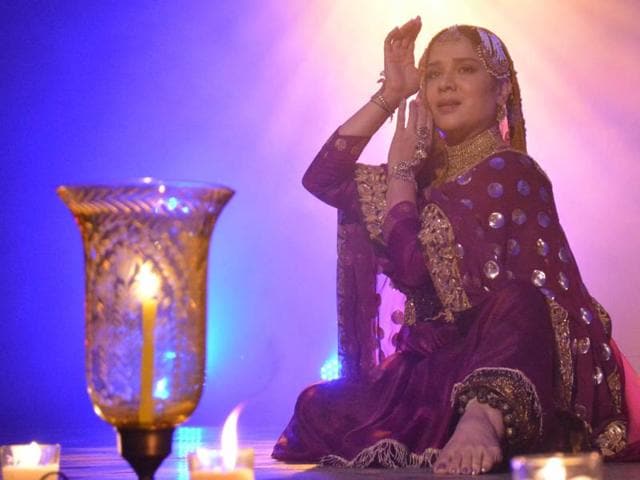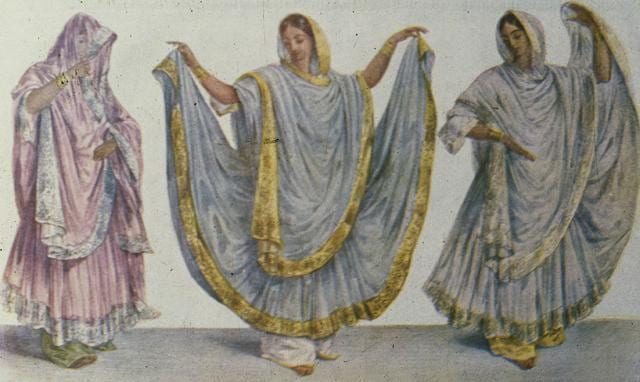In the company of the tawaif: Recreating the magic with darbari kathak
A dance performance aims to change perceptions about courtesans by recreating the magic of their world
Umrao Jaan, the 1981 film, did much harm to the story of the courtesans. Despite the remarkable performance by its lead actors, the film, based on a novel by Mirza Hadi Ruswa, helped propagate many myths. One of those, as feminist scholar Veena Talwar Oldenberg explains in her essay on the courtesans of Lucknow, was the stereotype of the “evil kidnapper” and the “exploitative madame”. It’s a narrative that the courtesans Oldenberg met in Lucknow disputed vehemently. Instead, the women claimed that they had escaped a life of violence and abuse in their families, and took refuge in the kotha to restore their self-esteem.

In mainstream discourse, however, the courtesan was much stigmatised — the kothewali, or, the “prostitute”, she was always denied agency, aided in no small measure by Bollywood. The erstwhile courtesan — talented, influential and propertied — was much maligned by the anti-nautch girls campaign led by the British (who wanted to usurp the throne of Awadh), and in time, the courtesan ended up fading into oblivion.
Now, with her latest performance, Kathak exponent Manjari Chaturvedi is hoping to change perceptions about courtesans and help younger audiences appreciate their talents. “These women were great singers, poets and dancers . They were extremely fashionable and graceful too. But they were relegated to being mere prostitutes,” she says.
For Manjari, who specialises in Darbari Kathak, this realisation came more than a decade ago, when she met the octogenarian Zarina Begum, one of the last surviving courtesans, at an event in Lucknow . Manjari says she was struck by the Lucknow-based courtesan’s humility. “When I suggested that we perform together on stage, she was overwhelmed, and felt that I was according “too much respect” to someone like her,” recalls Manjari, who discovered that Zarina was impoverished, and decided to help her out financially. Later, Manjari did a show with her in the city.
Read:The Last Song of Awadh: a musical tribute to Lucknow's heritage
Her research on the subject led her to interesting facts. “The courts had both male and female performers, and with the decline in the fortunes of the royalty, the men became ‘Ustads’. But the women didn’t get enough respect,” she says. Some singers such as Begum Akhtar, though, managed to survive and gain fame. But the dancers couldn’t manage to do so for themselves, she says. “It struck me that even research had ignored the courtesans. I couldn’t find much aside of Pran Nevile’s book, Nautch Girls of the Raj.”

But perseverance and fortuity led Manjari to Wajid Ali Shah’s book, Bani, another book on Kathak notations that was sold off to a scrap dealer by a royal family, and yet another that she sourced from a library in the Rampur estate. Shah’s book, that has graphic depictions of the dance steps performed in the courts is now out of print, she says. The books helped her piece together her performance, and even design the outfits. “I incorporated the salaami ka tukda [facial expressions and hand gestures to express salutation] in this performance, because they courts. It’s part of the curriculum for kathak dancers, but they seldom perform it,” she says.
Read:Classical Indian music more popular abroad: Ustad Johar Ali Khan
For about five years now, Manjari says she has been working on this subject, and in the process, she has even managed to miff Kathak purists, who argue that she was “pushing Kathak back to the kotha”, and demeaning the form. To her detractors, Manjari cites the many noteworthy examples — the influential courtesan, Chanda Bibi of Hyderabad who was also a poet and a warrior, and Gauhar Jaan of Calcutta, who refused to succumb to the oppressive diktat of the British.
With her performance, Manjari says she hopes to preserve the memories of the courtesans and their art. “I remember asking Zarinaji [now debilitated by paralysis] what could I do for her. All she wanted was to wear the Banarasi sari, and perform on stage. I knew I had to do this for her, and for all the other tawaifs who deserve that dignity,” she says.
(Manjari Chaturvedi will be performing at the India Habitat Centre , Lodhi Road, on August 31 at 7.30 pm. Entry by invitation. Call:9871310119)





